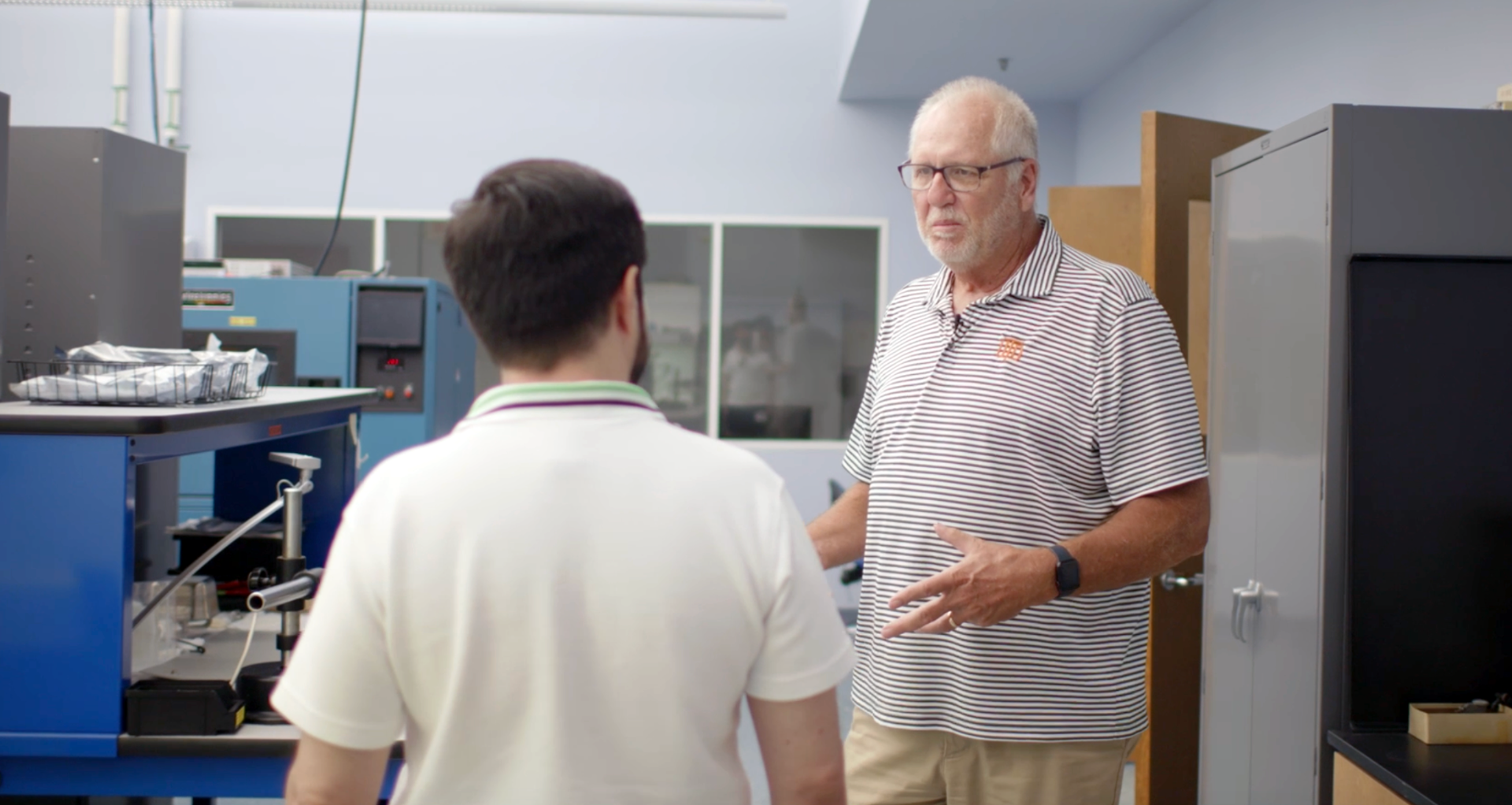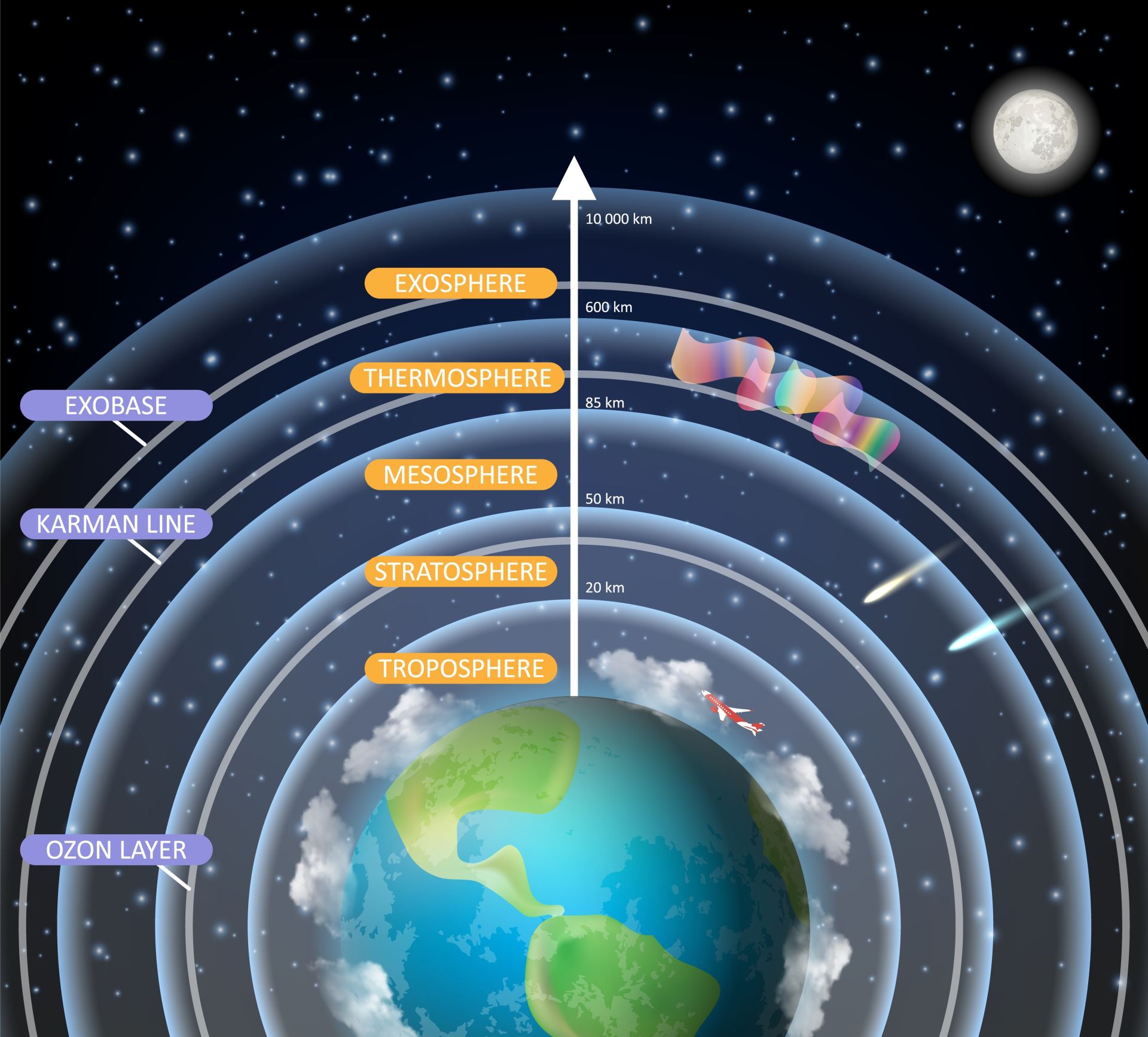
For decades, Phillip Anderson MS’85, PhD’90, physics professor and director of the William B. Hanson Center for Space Sciences, has had a dream to unravel the mysteries of the ionosphere-thermosphere. Even as a UT Dallas graduate student in the ‘80s working with Dr. Hanson, Anderson knew understanding the upper layers of Earth’s atmosphere would become his lifelong mission.
Anderson is now finally getting his chance to realize his vision in full. In its largest project yet, the Center for Space Sciences in the School of Natural Sciences and Mathematics has been selected to build instruments to fly on six satellites for NASA’s Geospace Dynamics Constellation (GDC) mission.
Stretching roughly 50 to several hundred miles above Earth’s surface, the ionosphere-thermosphere is a region where our neutral atmosphere transitions into the ionized plasma of space. It is electrified by extreme ultraviolet radiation from the Sun.

The structure and fundamental physics of this region are not yet fully understood. Scientists do know, however, that interactions here create highly variable space weather effects that impact communications and navigation signals, alter satellite orbits, and create currents in conductors on Earth’s surface such as power lines that can cause infrastructural damage.
Using an array of integrated sensors, GDC will provide the most comprehensive direct global measurements of Earth’s dynamic, complex boundary between atmosphere and space.
“We’ve submitted a $40 million proposal to construct six thermal plasma sensors for NASA,” said Anderson. “They measure the 3D motion of the ions of the plasma in the atmosphere, as well as temperature and physical composition.”
The last mission with such a comprehensive set of instruments in the ionosphere/thermosphere system was in the early 1980s — a single-satellite mission that had UT Dallas instruments on it. Almost 40 years later, scientists have more advanced, coupled models that will improve interpretation of the data.
“These are computer-based models that show us simulated interactions of several facets of the near-Earth environment,” Anderson said. “Understanding how energy passes through different regions from the sun to the surface of the Earth is critical to understanding and predicting space weather effects.”
Improving space weather prediction is vital, for instance, for forecasting atmospheric drag, which can cause satellites to descend into lower orbits and re-enter the atmosphere. In 2022, the Starlink internet program launched 49 satellites into a geomagnetic storm. Increased drag, which was not predicted, caused 40 of the satellites to re-enter and be lost.
As more spacecraft and debris are added into Earth’s orbit, accurate measurements from the GDC mission will improve our daily lives, from maintaining GPS accuracy to protecting power grids, Anderson said.
The thermal plasma sensor is one of seven instruments that make up the GDC project, which is a three-year mission scheduled to launch in 2031. The UT Dallas team will work with several institutions throughout the duration of the project, including Penn State University and the University of Michigan.
“Our sensors will need to work seamlessly with the other six instruments on the GDC spacecraft,” Anderson said. “A challenging part of the project will be integrating our different technologies to work together in synergy.”
Anderson says the project will entail a long process of scientific team discussions and collaboration to determine the measurement requirements, precision, accuracy and resolution. This will then be incorporated with the instrument capabilities determined by engineers.
NASA will approach the project in several phases. In the first phase, the Center for Space Sciences received $6 million under contract through November 2024, Anderson said.
The ambitious project will also be an opportunity for UT Dallas students. While they will not work directly on the instrumentation, they will work in multiple areas, including analyzing data.
“Undergraduate and graduate students have the chance of a lifetime here at UT Dallas,” said Anderson. “The GDC mission is what I’ve been working toward my whole career, and I can’t wait to share that experience with young, bright-eyed scientists.”
Anderson is confident in the quality of the contributions the center will make, pointing to its impressive track record. “We’ve been doing this a long time, and we currently have 10 satellites in orbit with our instruments on board,” said Anderson, who grew up in Richardson, Texas, and worked for the NASA Goddard Space Flight Center.
Space weather has been studied for decades, but GDC will collect an unprecedented volume of data that will drastically increase our understanding of the space environment surrounding our home planet. Anderson is more than ready for the challenge, seeing it as unfinished business.
“Some people may ask whether it’s really time for this mission,” he said. “And the answer is no — the time for this mission was several years ago. I am thrilled it’s finally taking off.”
Help us leave the planet a better place for future generations. Your support for the School of Natural Sciences and Mathematics funds scientific discoveries with real-world applications, student and faculty recruitment, and academic scholarships.